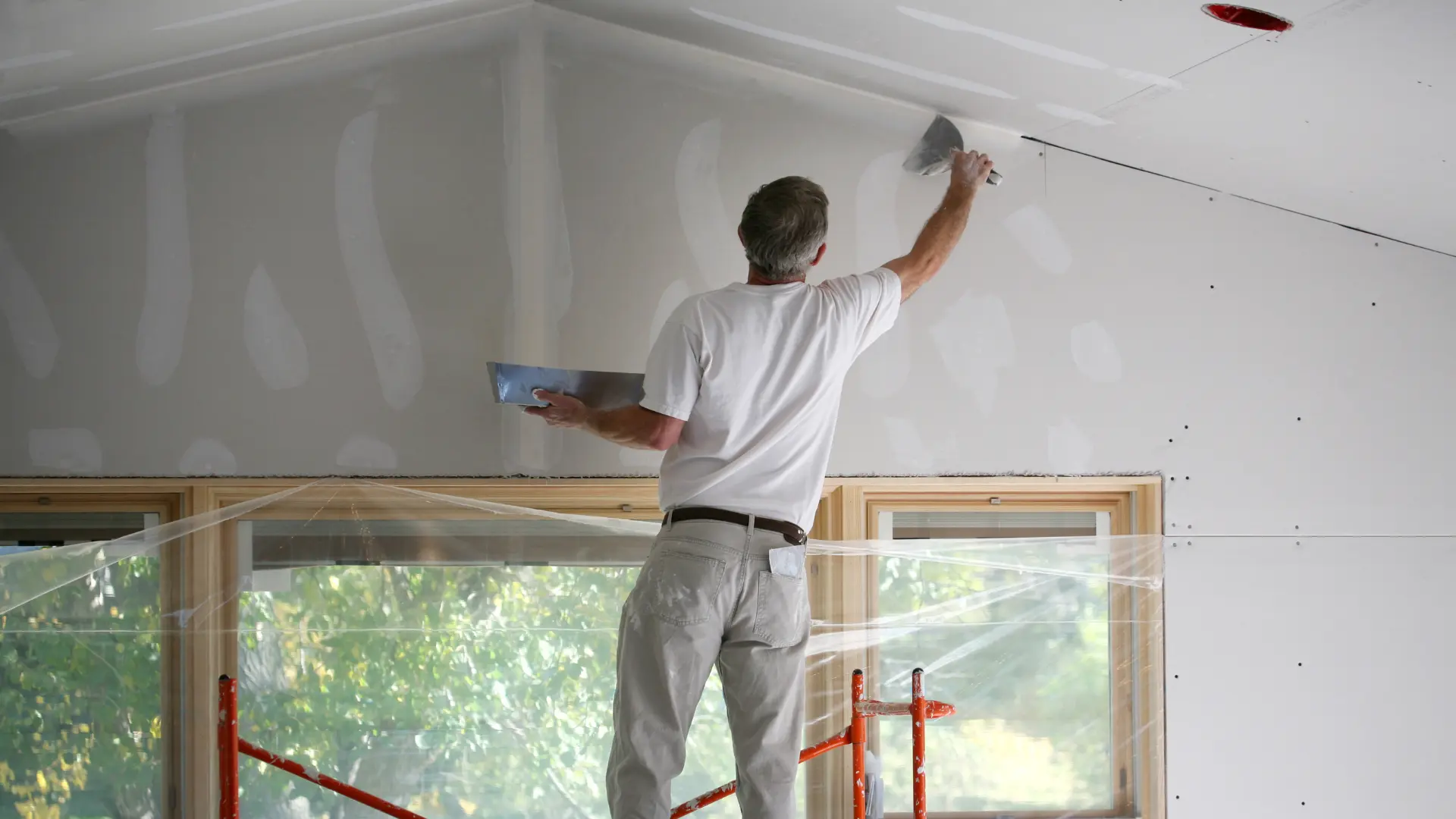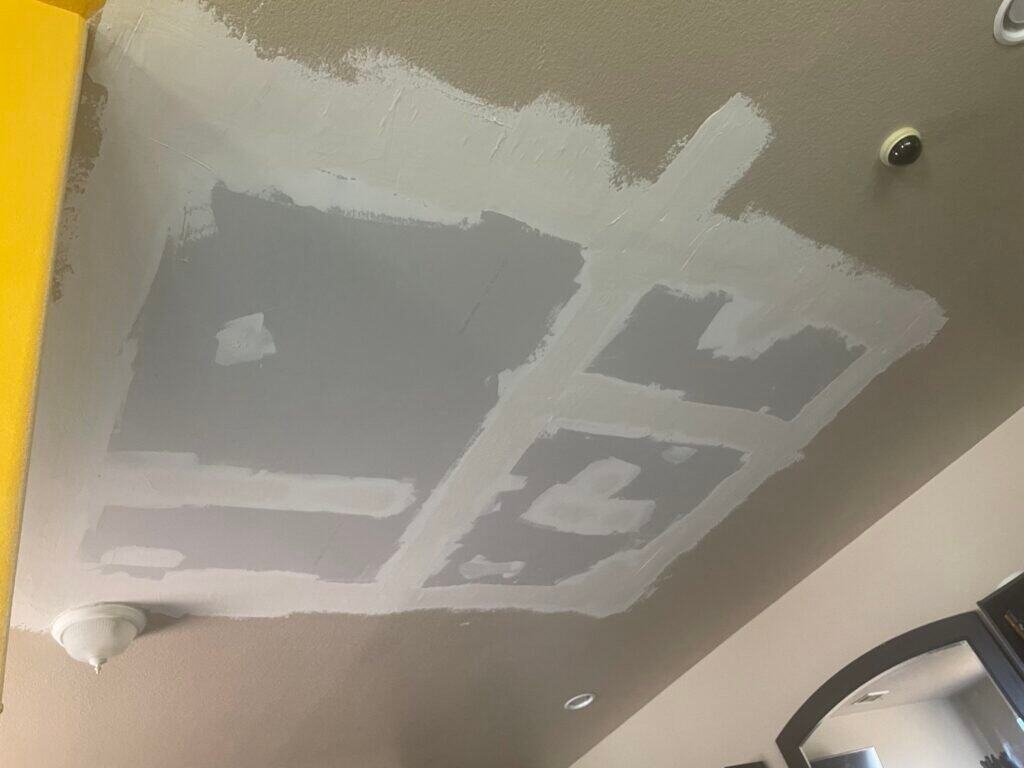Essential Tips for Effective Drywall Repair Work and Installation Techniques
Effective drywall repair and installation needs a cautious method. Understanding the kinds of drywall and having the right devices is crucial. Correct techniques and exact dimensions can greatly influence the result. Numerous forget crucial steps like taping and sanding, which can make or break the final look. As tasks proceed, typical difficulties may develop that require attention. Discovering these pointers can cause a more refined and effective surface.
Understanding Various Sorts Of Drywall
Recognizing the numerous kinds of drywall is important for any effective repair service or setup project. Drywall, generally recognized as plaster board, is available in several ranges tailored for certain applications. Standard drywall is the most commonly utilized kind, perfect for basic interior wall surfaces and ceilings. Moisture-resistant drywall, commonly environment-friendly in color, is developed for areas prone to moisture, such as washrooms and kitchen areas. Fire-resistant drywall, normally colored pink or purple, is crafted to stand up to greater temperatures and is frequently made use of in garages or near furnaces. Additionally, soundproof drywall helps in reducing noise transmission, making it appropriate for multi-family homes or videotaping studios. Specialized drywall, like concrete board, is utilized in damp areas like showers or bathtub surrounds. Comprehending these types aids in choosing the best material for each and every project, making certain toughness and efficiency in fixings or new installations.
Important Tools for Drywall Repair and Setup
Having the right tools is necessary for effective drywall repair service and setup. A top quality energy knife is essential for cutting drywall sheets specifically. A drywall T-square assists guarantee straight sides, while a taping blade is required for applying joint compound efficiently over joints. Furthermore, a drywall saw enables for removing damaged areas or fitting drywall around components.
For hanging drywall, a power drill with drywall screws is crucial, as it makes it possible for quick and secure installation. A degree is also vital to verify that the drywall is straight and properly straightened. A sanding block or post sander is vital for smoothing out joint compound once it has actually dried. Lastly, a determining tape is crucial for precise dimensions, preventing waste and making certain an appropriate fit. Outfitted with these devices, people can tackle drywall projects effectively, bring about professional-looking results.
Step-by-Step Overview to Fixing Holes and Cracks
When resolving openings and splits in drywall, having the right tools and materials is crucial for an effective repair. This guide describes the needed items and gives a clear, step-by-step process to efficiently bring back the surface area. Comprehending these elements will certainly aid assure a seamless finish and lasting results.
Tools and Products Needed
A well-equipped toolkit is essential for effective drywall repair and installation. Key tools include an energy blade for reducing drywall, a measuring tape to guarantee accurate sizing, and a drywall saw for bigger openings. A putty blade is essential for using joint compound smoothly, while a sanding block or pole sander helps accomplish a seamless finish. For patching, a roll of fiberglass fit together tape or paper tape is necessary to strengthen joints. Furthermore, a drill and screws are needed for protecting new drywall items. Important products are composed of joint compound, primer, and paint to finish the fixing. Having these tools and materials available assures a smoother, more effective fixing process, generating professional-looking results.
Repair Service Process Steps
Fixing holes and cracks in drywall needs an organized approach to ensure a smooth coating. First, the area bordering the damage needs to be cleansed thoroughly to eliminate dust and particles. Next off, for tiny splits, a putty knife is utilized to apply a joint substance evenly over the location. For larger holes, a spot is necessary; the harmed section is eliminated, and a brand-new item of drywall is suited place, safeguarded with screws. Once the spot is in position, joint substance is related to blend the edges. After drying, fining sand the area smooth is important. The fixed surface must be topped and repainted to match the bordering wall, guaranteeing an unnoticeable repair service.
Techniques for Installing Drywall Panels
Setting up drywall panels requires careful planning and specific implementation to guarantee a smooth and expert surface. It is necessary to measure the wall surface space properly and reduce the panels to fit, making certain that they straighten with the studs. Placing the panels flat is commonly suggested, as this can improve the architectural honesty and decrease the variety of joints.
Using drywall screws, installers must protect the panels every 16 inches along the studs, making certain a company hold. It is crucial to stay clear of overdriving the screws, which can harm the paper surface. For corners and edges, using an utility knife enables for clean cuts and a snug fit.

Ending Up Touches: Insulation, Mudding, and Sanding
As soon as the drywall panels are safely in position, the following important step entails the finishing touches of taping, mudding, and sanding. Taping is necessary for producing a seamless shift between panels and hiding joints. A high quality drywall tape, either paper or fiberglass mesh, should be used over the seams, guaranteeing it adheres correctly to the mud that will be used following.
Mudding, or applying joint compound, complies with the taping procedure. This substance loads voids and ravel the surface area. An initial coat ought to be applied generously, feathering the sides to blend with the drywall. After the preliminary coat dries out, subsequent layers might be needed for a flawless surface.
Finally, sanding is essential to attain a smooth surface area. A fine-grit sandpaper needs to be used to delicately smooth out any kind of blemishes. Care should be required to avoid over-sanding, which can harm the drywall - Drywall Installation Ogden Utah. Properly implemented, these completing touches develop an expert look ready for paint
Tips for Keeping Your Drywall After Installation
Preserving drywall after setup is essential to preserving its look and architectural stability. Regular cleansing is necessary; see dirt and dirt can accumulate, so gentle wiping with a moist towel is advised. Homeowners ought to likewise check for any kind of signs of wetness or mold, specifically in high-humidity locations like kitchen areas and restrooms. If any kind of damage happens, it is very important to resolve it quickly to avoid further problems.
Utilizing furniture pads can help prevent scrapes or dents from heavy items. Furthermore, repainting the drywall with a top quality, cleanable paint supplies an extra layer of security and makes future cleansing easier. Prevent utilizing abrasive cleansers or devices, as these can harm the surface. Maintaining a steady indoor environment with ideal humidity degrees will help avoid breaking Go Here or buckling over time. By adhering to these tips, one can ensure that drywall stays in exceptional problem for many years to find.
Frequently Asked Inquiries
How Long Does Drywall Require To Completely Dry After Installation?

Can I Set Up Drywall Over Existing Drywall?
Yes, drywall can be set up over existing drywall, however it is necessary to assure the underlying surface area is protected and effectively prepared. This approach can improve insulation and decrease setup time, though it might add weight.
What Is the Finest Means to Soundproof Drywall?
The most effective way to soundproof drywall includes making use of specialized soundproofing products, such as resilient networks, acoustic caulk, and sound-dampening drywall. These methods successfully lessen sound transmission between areas, boosting general acoustic performance in living spaces.
Just how Do I Select the Right Drywall Thickness?
To pick the ideal drywall density, take into consideration the application and place. Standard property wall surfaces typically make use of 1/2 inch, while ceilings or specialized locations might require 5/8 inch for added toughness and soundproofing capabilities.
Are There Eco-Friendly Drywall Options Available?
Yes, green drywall alternatives are available. These consist of items made from recycled materials, gypsum boards with reduced unpredictable natural compounds hop over to here (VOCs), and those utilizing lasting manufacturing processes, providing environmentally-conscious selections for building and construction and remodelling projects.
Having the right tools is necessary for efficient drywall fixing and installation. For hanging drywall, a power drill with drywall screws is crucial, as it allows quick and protected setup. Secret tools consist of an energy knife for reducing drywall, a tape action to ensure accurate sizing, and a drywall saw for bigger openings. Yes, drywall can be installed over existing drywall, but it is essential to assure the underlying surface area is protected and sufficiently prepared. The best means to soundproof drywall includes making use of specialized soundproofing materials, such as durable networks, acoustic caulk, and sound-dampening drywall.